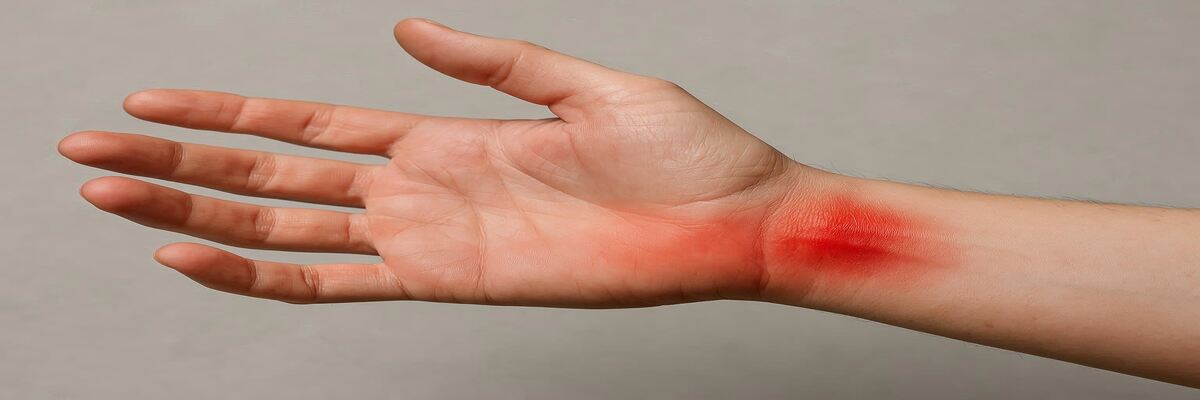Are you experiencing tingling and numbness in your hands? If yes, this might be a symptom of carpal tunnel syndrome, which is a common condition caused by pressure applied to the median nerve in the carpal tunnel in the wrist. It is more common in women. It usually gets better with timely treatment; otherwise, it could lead to complications. So, learn what causes carpal tunnel syndrome, its symptoms, and diagnosis in this article. Visit the best Pain Management Clinic in Brooklyn at Doral Health & Wellness or log on to www.doralhw.org. to schedule an appointment with us.
What is carpal tunnel syndrome (CTS)?
When the median nerve is compressed in the wrist’s carpal tunnel, it is called carpal tunnel syndrome (CTS). The carpal tunnel is a narrow passageway surrounded by bones and ligaments on the palm side of the hand. 90 percent of all neuropathies are caused by nerve entrapment neuropathy. The wrist anatomy, health conditions, and repetitive hand motions all contribute to carpal tunnel syndrome.
Symptoms and Signs
- Pain, numbness, and paresthesia are among the earliest signs of carpal tunnel syndrome.
- The thumb, index finger, middle finger, and the radial part of the ring finger (on the thumb side) are the most common sites of symptoms; however, this might vary.
- Pain can also spread up to the affected arm. Hand weakness, poor fine motor coordination, clumsiness, and thenar atrophy can develop as the disease progresses further.
Causes
When the carpal tunnel becomes swollen, it puts a lot of pressure on the median nerve, which results in pain. Carrying a lot of extra weight, having autoimmune diseases such as rheumatoid arthritis, and being pregnant are all risk factors for developing carpal tunnel syndrome.
Despite the great range of diseases, both entrapment and entrapment-inducing mechanisms are common.
Due to mechanical overuse, a decrease in the carpal tunnel’s diameter (considered the most common association)
- Arthritis
- Injury
- Acromegaly
- Carpal tunnel enlargement due to disease:
Ganglion cysts and primary nerve sheath tumors are two examples:
- Synovial enlargement in rheumatoid arthritis is accompanied by deposition of foreign material, such as amyloid.
- Compression and traction mechanisms are involved in the pathogenesis and development of CTS.
One of the pathophysiologic effects of the compressive element is an aggravating cycle of increased pressure, restriction of the general venous outflow, local swelling, and impairment of the intraneural circulation of the median nerve.
The myelin sheath and axon acquire lesions, and the surrounding connective tissues become inflammatory and lose their normal physiologic protective and supportive function because of the dysfunctional environment.
The unfavorable environment is exacerbated as the nerve is further injured by repetitive traction and wrist motion. Additionally, the median nerve might be compressed if any of the nine flexor tendons passing through the carpal tunnel become inflamed.
CTS is an idiopathic condition.
- Women are 65–80% more likely than men to suffer from idiopathic CTS between the ages of 40 and 60, and 50–60% of these cases are bilateral.
- Idiopathic CTS is associated with synovial membrane hypertrophy in the flexor tendons due to connective tissue degeneration, sclerosis, edema, and collagen fragmentation in the blood vessels.
- There were histological alterations that suggested dynamic causes such as repetitive strain.
Diagnosis
To diagnose CTS, your doctor will ask questions about your symptoms. Then, based on the findings, the doctor will order some tests, such as:
- Physical exam. Your healthcare professional tests the feeling in the fingers and the strength of the muscles in the hand to check sensory and motor impairments, as well as indications of thenar wasting. The sensitivity and specificity can vary.
- Carpal compression test: In this test, the doctor applies strong pressure on the carpal tunnel for 30 seconds. When paresthesia, pain, or other symptoms are recreated, the test is considered positive.
- Palpatory test: The health care professional uses this examination to assess the soft tissue surrounding the median nerve for mechanical constriction.
- Prayer test: In this test, patients are asked to hold their hands together for one minute while performing the reverse Phalen’s, like praying. Reproduction of symptoms indicates a positive result.
- The Hoffmann-Tinel sign: This is another commonly used test, despite its limited sensitivity and specificity. To activate the median nerve, the healthcare expert taps directly over the carpal tunnel. A positive test is one in which symptoms are re-created.
- X-ray: An X-ray test is used to find other causes of wrist pain, such as arthritis or a fracture. However, it does not help diagnose carpal tunnel syndrome.
- Ultrasound: An ultrasound of the wrist is used to get a clear picture of the tendons and nerves. This can help show whether the nerve is being compressed.
- Electromyography: This test is used to measure the tiny electrical discharges produced in muscles. During this test, a thin-needle electrode is inserted into specific muscles to examine the electrical activity when muscles contract and rest. This test can identify damage to the muscles controlled by the median nerve. The test may also rule out other conditions.
Early diagnosis helps you manage the condition and restore your hand functionality. Make sure you don’t ignore the symptoms and seek medical help promptly.
Need help with carpal tunnel syndrome or any other type of pain issues? If you’re ready to take the next step in managing your pain, we recommend consulting with our healthcare provider to explore the right treatments or therapies for you. Always listen to your body and adjust your daily routine to prioritize your well-being. Visit Doral Health & Wellness Pain Relief Department in Brooklyn, to get professional help and guidance on how to manage your problem. Call us on + 1-718-367-2555 to get a consultation. If you need help learning coping methods, register your information and make direct contact with our doctors at https://yuz88hfiyh7.typeform.com/Doralintake. Log on to www.doralhw.org. Or visit us at 1797 Pitkin Avenue, Brooklyn, NY 11212.






